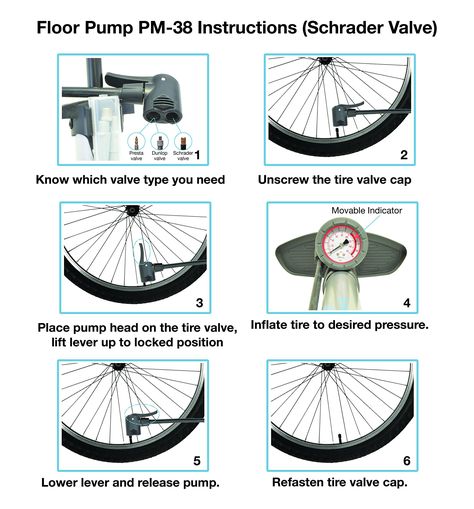Picture yourself having recently acquired a brand-new bike. When you need to check its tire pressure, you see a different kind of valve. After some research, you find out it’s called a Presta valve.
In this case, how would you check your tire pressure?
As insignificant as it may look, valves play an important role in your bike tire. There are two main types of valves –and a third one called Woods or Dunlop, but we’ll leave that one out for today.
Schrader valves are the ones you find in cars and most regular bikes. Their circumference is of the same width, top to bottom.
Looking at its tip, which is threaded to allow a dust-cap for protection, you’ll see a pin. This is the spring valve. It needs to be pressed in order to let air flow through. Schrader valves are generally covered in rubber.
Presta valves, on the other hand, are more commonly found in performance bikes. This is because their thinner presentation allows for thin tires.
For racing bikes, this is a great advantage, as it needs less space than Schrader valves, and weighs much less –no counterbalance is needed.
Another difference from Schrader valves is that they are threaded all the way down. This is to allow adapters, in case of need. They also have a valve, its nut being the thinner part on its tip.
Unlike Schrader valves, Presta valves seal tightly on air pressure, which means no spring valve is required.
Even though they have a different system when compared to Schrader valves, checking bike tire pressure with a Presta valve is not a difficult task.
There are some things to bear in mind when checking your tire pressure.
One key factor is not to unscrew the valve nut entirely, as air will flow freely and, of course, deflate your tire. Another one is that, depending on how modern your pump is, you may need either a new one which allows this kind of valve, or an adapter.
Another one is that, depending on how modern your pump is, you may need either a new one which allows this kind of valve, or an adapter.
There are some “smart” pumps, which allow both types of valves through the same opening. Otherwise, some pumps have two openings. Presta valves require the smaller one in this case.
In order to check your bike’s tire pressure with a Presta valve, you can use a pump with a gauge.
First, unscrew the valve nut on its tip. To make sure it is correctly done, apply some pressure with the tip of your finger. Air should flow out of the tire and seal back again once you stop pressing. This is also useful to “clean” the valve before inflating it.
Engage the correct pump to the valve, and read the information on the gauge. You can also use a stand-alone gauge to do this and follow the same procedure. Just be aware that, as you check the readings, air may slightly come out, and the exact pressure will be lost.
So, if you’re choosing this last option, it is recommended to pump a little extra before reading, so that you can decide when to stop leaving air flowing out.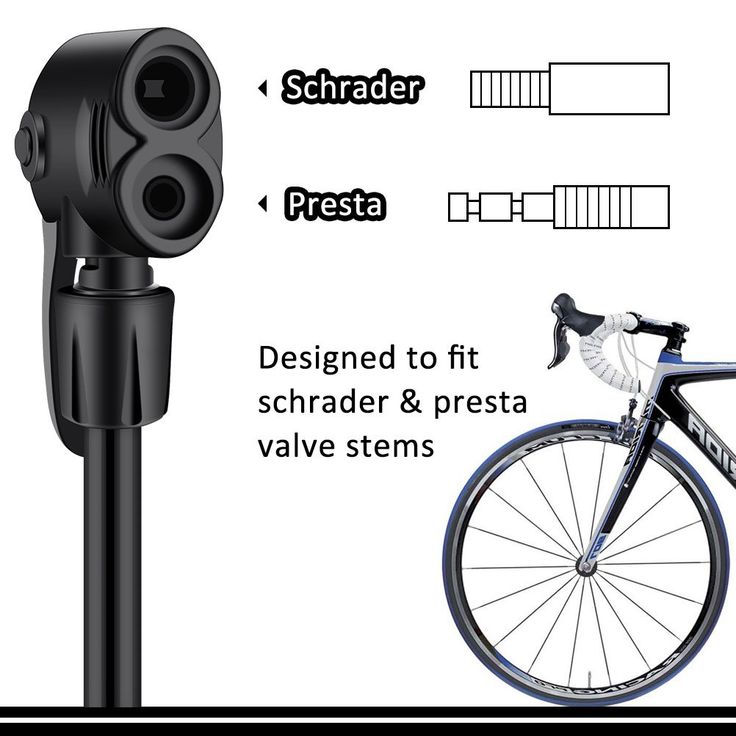
JavaScript is disabled. For a better experience, please enable JavaScript in your browser before proceeding.
1 - 20 of 21 Posts
1 - 20 of 21 Posts
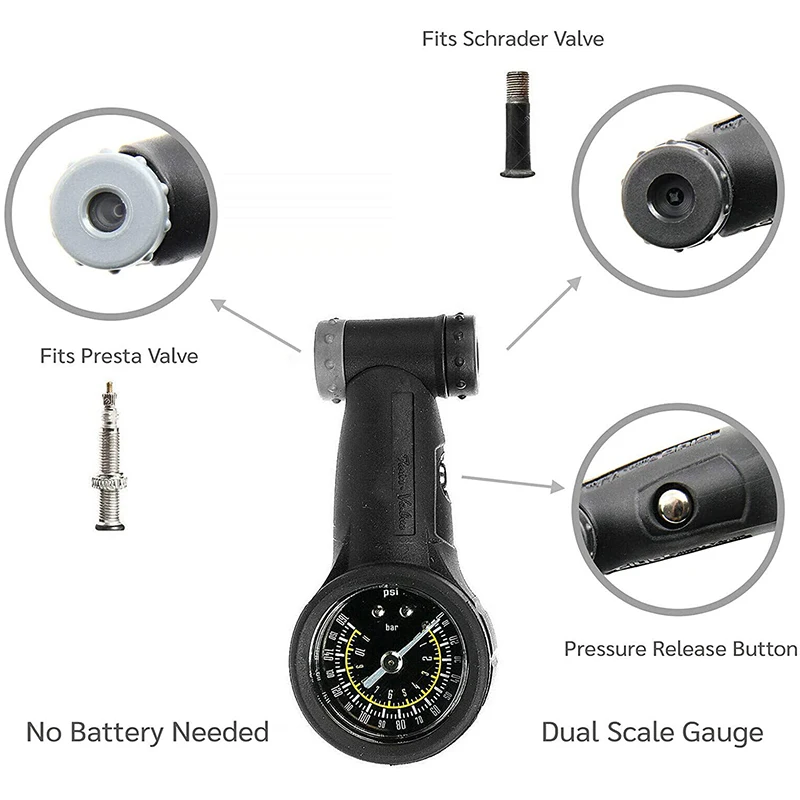 Please consider creating a new thread.
Please consider creating a new thread.Top
" presión tires should be 10% of the rider's weight plus the weight of bike ". For example, a cyclist weighing 68 pounds with a bike 8 kg adds 76 kg, with which his presión should be 7.6 bar.
Esta pressure drop can be 15-20% i.e. yes you inflate your tire at 100 psi, the rim of that lower weight should be obtained inflated 80 to 85 psi. Poor tire pressure can that rim wear out faster by having it that replaced before.
For example: " 26 ×1.5 45-60” PSI , indicates that this wheel is aro 26 (inches) with a width of de 1.5 (inches) and a pressure of de de 9003 in 9003 60 PSI
For example, wide MTB tires typically use pressures between 25 and 30. PSI . Intermediate covers, common in bikes hybrid and bikes gravel, require 40 to 70 PSI .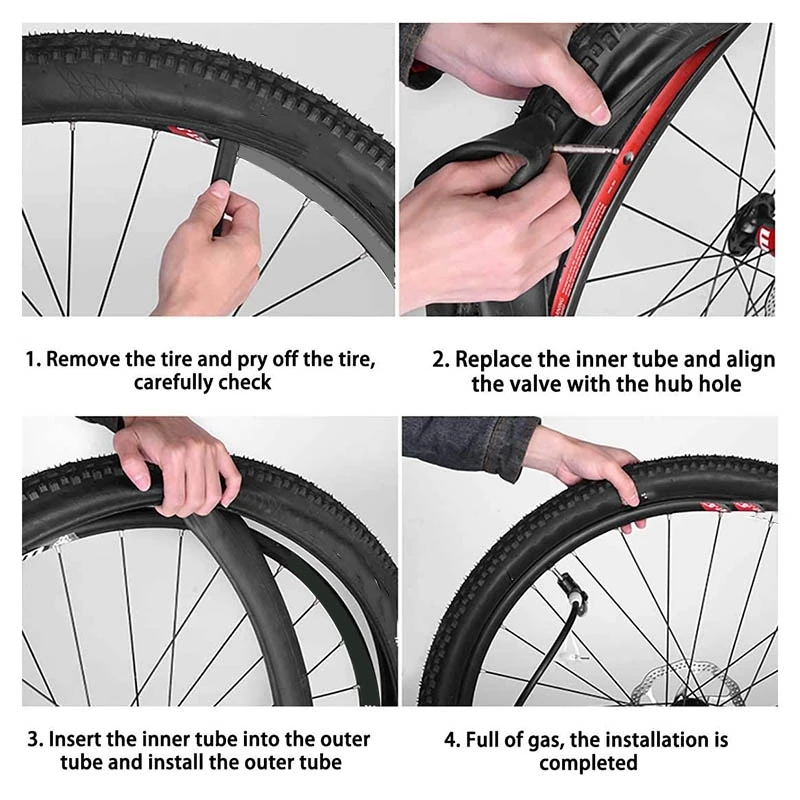 Narrower rims common on route bikes, they generally recommend 80 to 130 PSI pressures.
Narrower rims common on route bikes, they generally recommend 80 to 130 PSI pressures.
pressure se is designed for an average weight of approx. 75 kg. bikes for folding trucks with 16" to 20" wheels typically 60 to 120 psi (4 to 8 bar) compared to 35 to 65 psi (2.5 to 4.5 bar) for bicycle traditional (city, mountain, hybrid…) from 26-28″.
Use a Schrader valve (also called "American valve" or "Automotive valve"). This system consists of a central rod surrounded by a core. To press the rod, you will need a tool to help you release the air. Valves are usually wider than Presta or Woods valves.
The answer is simple. It's just a question de nat. Pressure de cover bicycle is reduced due to composition district judges containing nitrogen and oxygen. Be aware that a flat tire is not always synonymous with de prick.
yes . Severe overpressure will cause the tire to blow off and come off the llanta or even explode. Si this happens while bike , an accident may occur.
Si this happens while bike , an accident may occur.
Wide chamber tires (2.3 and up): 28 to 30 psi - from 1.9up to 2.1 BAR. Wide tubeless tires (2.3 and up): 26 to 28 psi - 1.7 to 1.9 BAR. Thin tubeless tires (2.25 or less): 27 to 28 psi - 1.8 to 1.9 bar.
Given these prerequisites, the steps to be taken to measure presión - gold consumer goods tire are as follows: Carefully remove the cap. Connect the pressure gauge hose to the wheel hub, you will hear air coming out. Then you will see a reflection on the gauge of the amount of air that is in the wheels.
AT 65 PSI COLD" indicates the maximum load range of Llanta and the corresponding maximum inflation pressure in cold weather.
Unlike Presta, Schrader works like a check valve. That is, it passes air in only one direction. The hinge or stem is spring loaded to hold it in the closed position and is opened by airflow from the inflator.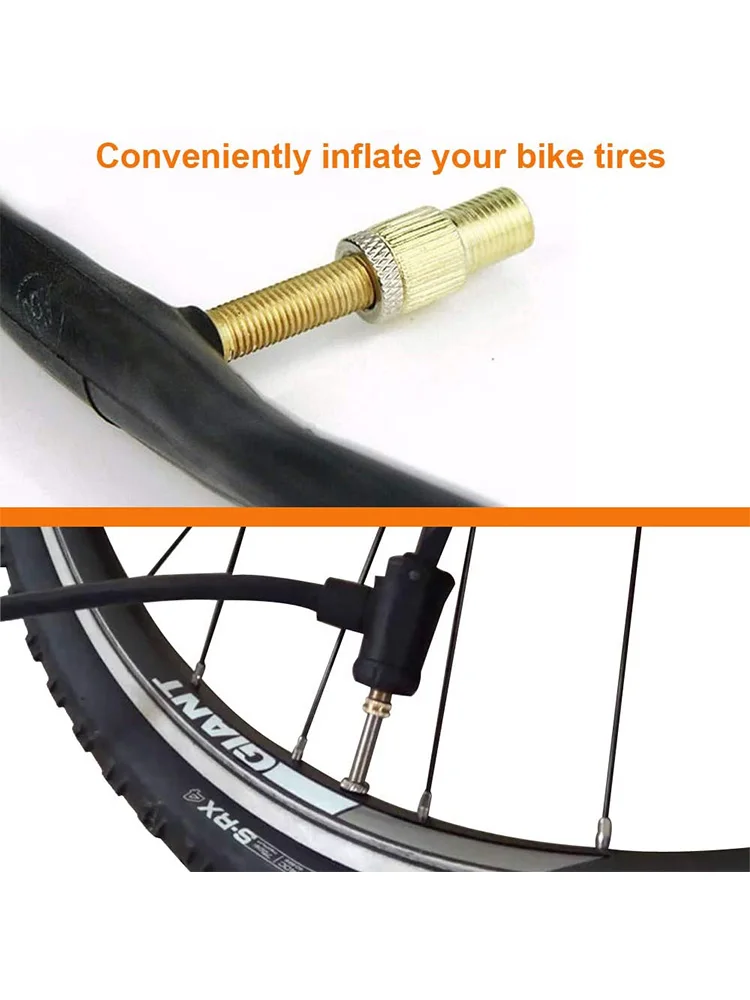
The American or Schrader valve is the thicker of the two as it is more resistant to abuse and is regularly found in the chambers of inexpensive cars, motorcycles and bicycles. Both foot pumps and compressors are compatible with this type of valve.
The recommended tire pressure depends on the size of the vehicle and its tyres. Based on the usual tire size for each segment, small cars typically have 30 psi, midsize cars 36 psi, and large cars 42 psi.
The answer is simple. It's just a matter of physics. Bicycle tire pressure is reduced due to the composition of the air containing nitrogen and oxygen. Be aware that a flat tire is not always synonymous with a puncture.
Presta valve: These are thin valves. They are designed specifically for bicycles. They are usually fitted to higher end bikes, although they are becoming more and more popular.
The intake and exhaust valves are part of the mechanism that allows liquids and gases to enter and exit the combustion chamber and cylinders. The first is responsible for regulating the intake of the air-fuel mixture, and the second allows the gases formed as a result of combustion to escape.
The first is responsible for regulating the intake of the air-fuel mixture, and the second allows the gases formed as a result of combustion to escape.
If it is a Dunlop valve, slightly loosen the nut on the top of the valve to release some air. Please screw it tightly before inflating, otherwise the air will keep escaping.
The hand pump has a plastic or fiberglass piston. With the translational movement of air, it presses the walls of the glass against the cylinder, thus forming a seal against its own valve. Thus, this piston can force air into the tire through the hole at the far end.
Remove the tire valve caps. Use the air pump to inflate the tires with air. You can find air pumps at the gas station. Inflate tires when they are cold.
On the other hand, if the tires allow more air to pass than the manufacturer recommends, the sidewalls will not be supported, the wheel will wear unevenly (resulting in reduced tire life), and the tire will have less grip, requiring more stopping space. and ...
and ...
For example: "26x1.5 45-60" psi means this wheel has a rim diameter of 26 (in) and a width of 1.5 (in) and the recommended air pressure is between 45 and 60 psi inch.
An easy way to tell if your tires are ready to be replaced is to deflate the wheel and flatten the tire with your hand: if you feel resistance, a hard touch like plastic, or holes appear on the side when tightened, then the tire is damaged. it's time to change.
You will notice how it wears, especially if it takes time at less pressure than recommended. Transportation of a tire in a flat state increases the wear of its outer edges, the shoulder areas of the tire. You will also notice that the tire is hotter than the others.
It usually takes about a year for a tire to lose its minimum safe pressure, but if our car has been exposed to extreme temperatures and the situation suddenly changes, the porosity can increase and lose more air than usual.
While Schrader valves are nearly universal in car tires, bicycle inner tubes are fitted with Schrader or Presta valves and most taller bikes have Presta valves. Schrader and Presta valves seal high pressure well.
Schrader and Presta valves seal high pressure well.
Quick, diligent, easy to do something. 2. adj. Prepared, soon, ready or willing to do something or for a purpose.
The valve does not close properly, overheats and chars the seat. Due to the load on the valve plate on one side, fatigue cracks can additionally occur in the area of the hollow flange.
There are several reasons for burning valves. One of them is natural wear and tear. As the engine gains miles, constant knocking and thermal erosion will wear down the surface metal and valve seats.
When we start the car and notice strong vibrations when the engine is idling, in addition the steering wheel shakes, we have difficulty starting or it just stops when trying to start, then most likely there is a loss of compression.
Pinch the neck of the balloon between your thumb and forefinger, thumb down and index finger up. Now take a deep breath, touch your lips to the hole in the neck of the balloon and start blowing. Keep your lips tightly closed as you blow into the balloon.
Keep your lips tightly closed as you blow into the balloon.
With car tire inflation, also known as an air compressor. There are countless suggestions that can save you from panic. Proper tire pressure guarantees optimal traction and even helps to reduce fuel consumption.
How much air should be in a 14 rim tire? Rim 14 or Rim 14 should be at 28 PSI as recommended by the manufacturer.
All tires have different air pressures depending on size and design. The manufacturer's recommended maximum inflation pressure can be found on the side of each tire.
Low profile tires also provide better “car contact”, the driver has better control of the car and can better predict its behavior. Also, the wobble is much less noticeable.
The PSI value corresponds to its name in English Pound-force per Square Inch, which in Spanish translates as pounds per square inch. It is the most widely used unit of tire pressure, especially in English-speaking territories.
All vehicles have a tire pressure label.